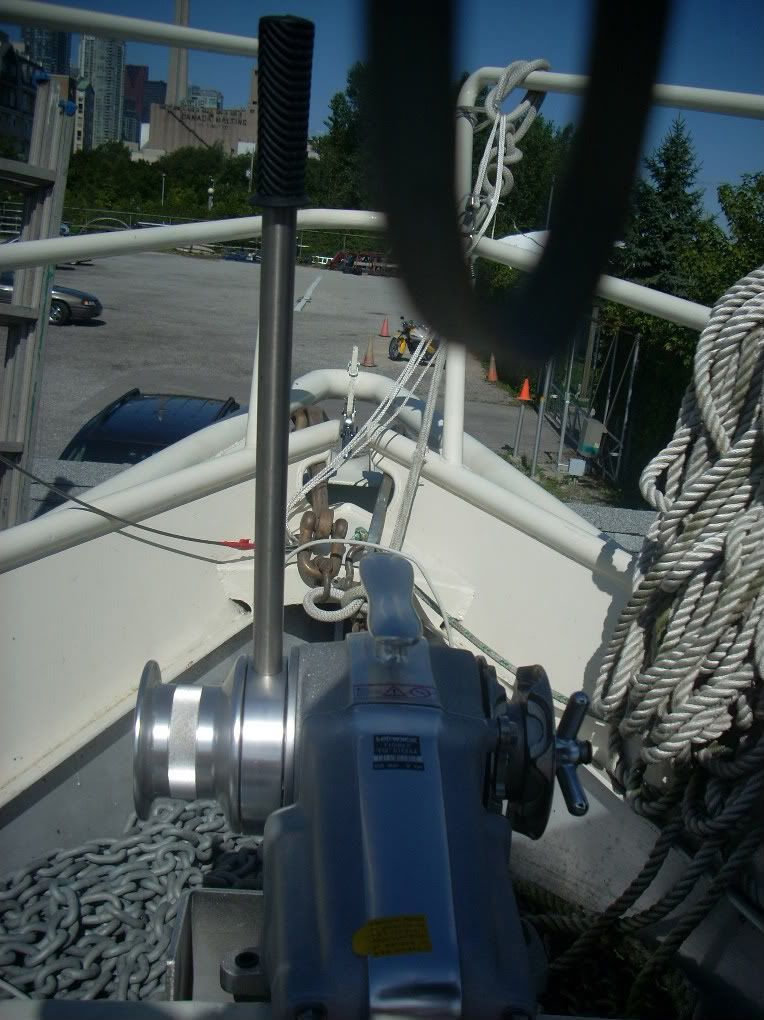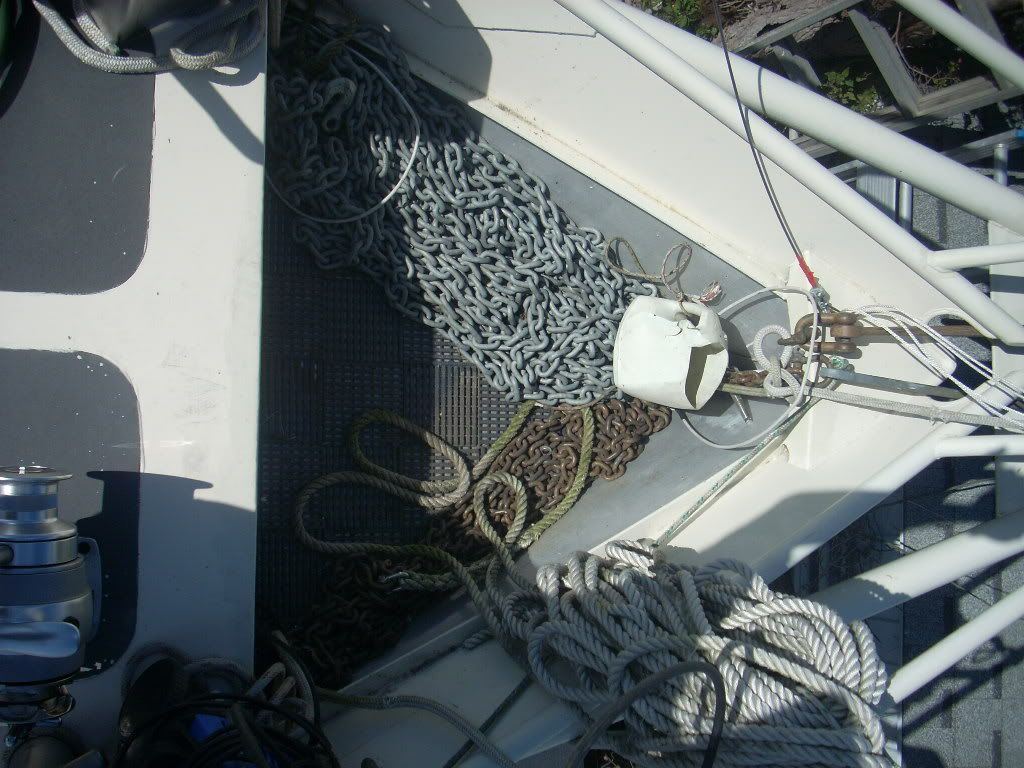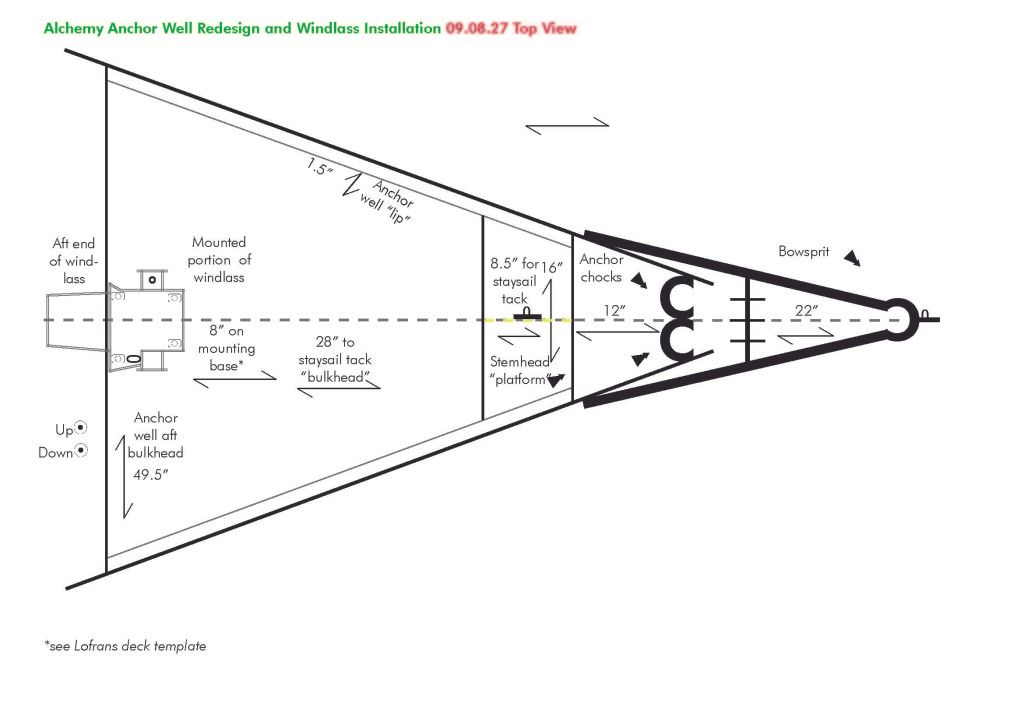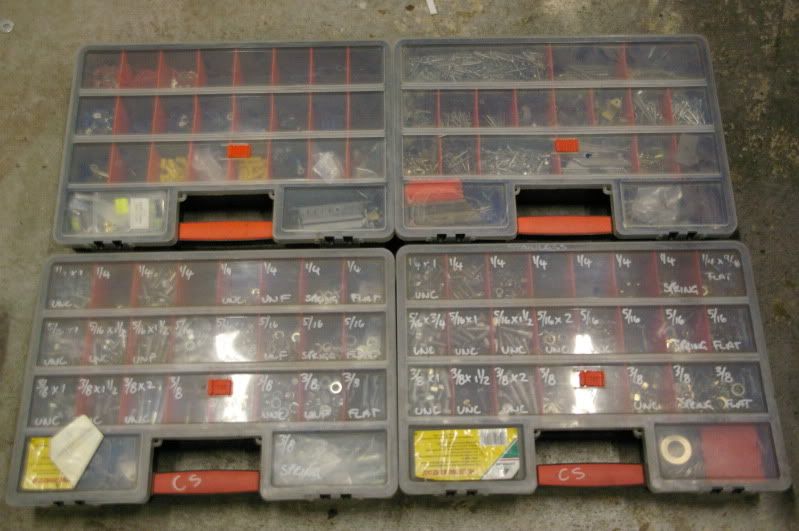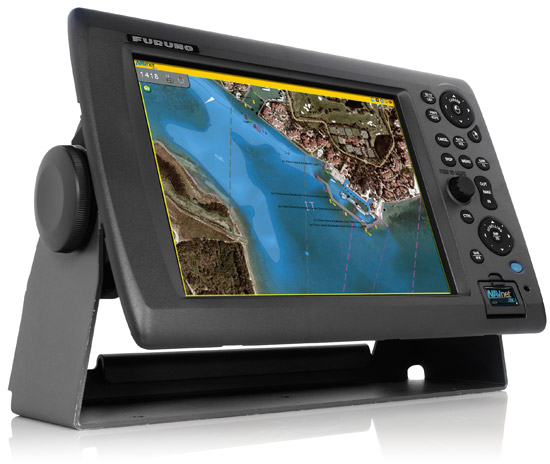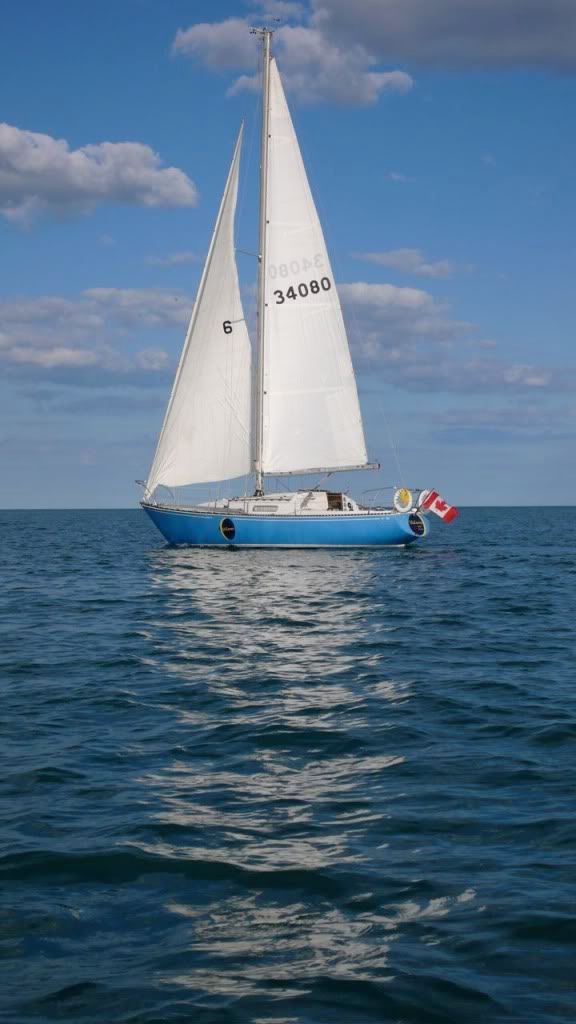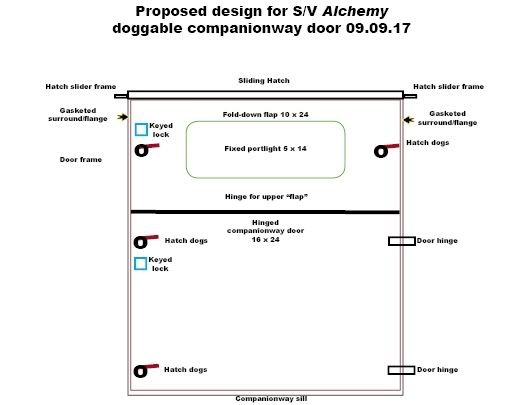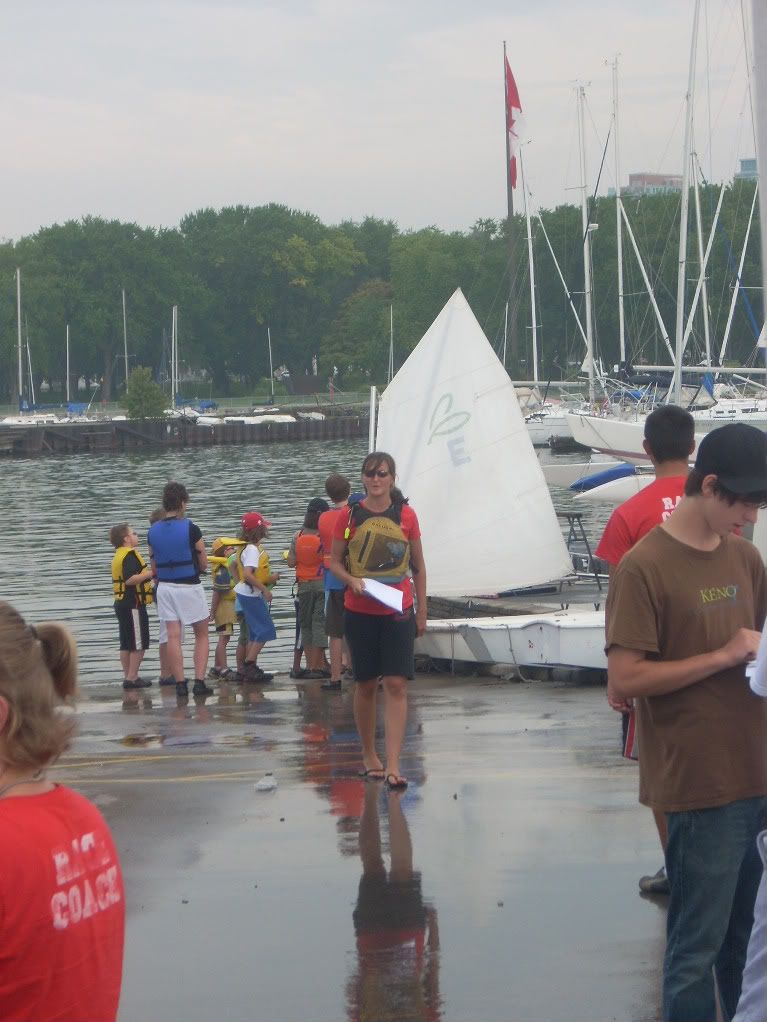 |
| Skipper Bruce Clark obtains the latest GRIB files. These and guidance from Southbound II would keep us (mostly) on the right side of trouble |
 |
| For 2009, this was a pretty advanced nav station, but the traditional element of a bulkhead compass and a "Zulu-time" 24 hour clock as still visible. |
I wrote about my
first saltwater crewing experience in Portugal in 2007. Both my wife and I have been trying to get in, separately for logistic as well as experiential reasons, as much “at sea” time as delivery crew as we can. As we plan to go offshore for a few years, any sea time we accumulate now will go into the fabled “black box” (see
previous entry) of seamanship and preparedness.
Longtime readers (if you in fact exist) will know that my wife and I have already done essentially short, coastal runs in Portugal at different times on the same 12-metre race boat,
Giulietta. This past June, my wife did a longer crewing trip on an Ontario 32,
Veleda IV, between Eleuthera in the Bahamas and New York City. Due to several equipment problems, she had to bail out of that trip in Charleston, S.C., but managed to learn a lot, nonetheless.
I received an e-mail in September out of the blue from Bruce Clark (
www.onainia.blogspot.com ... and
you can read Bruce and June's take on the trip now) asking if I fancied being crew aboard
Ainia, the Bristol 45.5 sloop he and his wife June were taking south to St. Thomas, U.S. Virgin Islands, after a year of prep in Liberty Marina in Jersey City, across from Manhattan. I knew Bruce via the purchase of his old Portabote for
Alchemy a couple of years previously, and he and I had stayed in touch via Sailnet.com and he was kind enough to think of me when a crewing opportunity arose. Things came together quickly: the recession had seen June “retired” somewhat earlier than planned, and so they figured they might as well get their cruising started sooner than later. Consequently, Bruce was under pressure to get their boat ready “enough” before pushing off, while postponing a few jobs for the tropics. This seems to be the norm for those embarking on the cruising life: if you get to 90% done, you might as well leave, because you’ll never entirely empty the boat job jar, nor should you, as it's nicer to complete some tasks in more gentle climates.
We departed Toronto, where the Clarks were wrapping up their affairs and getting some boat bits and clothing, on November 1 and drove to Jersey City to pick up our other crew, Burry Vanderveer. Burry, a major in the Canadian Forces on assignment in the States, has a boat of his own on the same dock as the Clarks, and was a great, experienced hand at sea. As the photo attests, he’s also a productive fisherman…this mahi-mahi was delicious, but was close to the last life we saw until the approach to the USVIs brought the return of flying fish, seabirds and even a curious, and perhaps lovesick, pilot whale.
 |
| The mahi-mahi was nummy-yummy |
After Jersey City, we drove south to the somewhat obscure, if pretty, Mobjack, Virginia, where
Ainia waited at a tiny, eight-slip marina. After completing a quick provisioning trip the next morning, we headed off into the Chesapeake. The pace was fast, as Skipper Clark wanted to get in front of a deepening trough of approaching low pressure. He was right: We rode winds from 20-35 knots all the way from the Bay to Bermuda and beyond, and dodged (or passed through) squalls and big seas for about nine days straight. The consolation (besides a number of days of 150 NM-plus passages) was that we never had truly dangerous weather, and we were hearing of boats behind us or relatively near to us in racing mode that were having a rougher time.
 |
| Add 400 NM of fetch to 48 hours of 25 knots or better, and the seas start to get lumpy. |
We heard of this via the famous Herb Hilgenberg (
South Bound II VAX498 - Ship routing and weather forecasting,
http://www3.sympatico.ca/hehilgen/vax498.htm), the amateur radio operator and weather forecaster who provides custom forecasting in return for reports on local conditions. Needless to say, it would be a good deal even if his accuracy wasn’t so high, which it generally was. Listening to Herb’s late-afternoon roundup of reports (dubbed by the crew as "the Herb Show", possibly because it was our sole form of entertainment aside from paperbacks and each other!) to and from widely scattered boats across most of the Atlantic was a highlight of an otherwise radio and “news” free 12 days at sea.
Apart from a rather general weather fax out of Boston and a couple of other U.S. stations (which ceased to apply after we reached the lower latitudes), Herb was our sole link to the “outside world”…an odd situation for someone with as many subscriptions and internet bookmarks as myself! Herb’s sound counsel kept us going at a bumpy but swift pace while less fortunate boats either had full gales or had to pull into Bermuda, the only evidence of which we saw was a faint loom on the NE horizon one night. Herb encouraged us to press on or face harsher conditions, and by the sound of other crews, he was right.
 |
| Helming goes better with Coke, and after about 28 knots apparent, it was more prudent to hand-steer. |
Avoiding worse weather (like the remnants of
Hurricane Ida) meant pushing the boat: we were determined to stay ahead of the rather conflicted and (even for Herb) hard to predict weather if we could. While I don’t want to give the impression we had uninterrupted wind, we had more than we needed to move close to hull speed most of the time until about 275 NM north of St. Thomas, when the wind clocked right out of the south (what Trades?) and we alternated between long tacks and motorsailing into the lighter breeze. Even with that breeze, however, the foredeck never really dried off. Opening portlights and hatches for air was only possible on the last couple of days, and not always for long.
 |
| Squall aboard! Seas piled up impressively a number of times during this trip. |
Bruce and June's Bristol 45.5, a stout Ted Hood design, features a centreboard we generally kept up until the wind was forward of the beam, and an in-mast furling mainsail that allowed quick reefing from the cockpit. While it’s true I’ve seen better shape on a main, the battenless sail certainly seemed robust enough (I estimate our greatest gusts during squalls was around the 45 knot mark), as did its uncomplaining furling gear. The safety and rapidity of changing the sail area was of great utility in the often fast-changing conditions when we were overpressed. One thing that didn’t change was our tack: thanks to the wind wheeling around with our course, we were on more or less the same point of sail and tack for many days. This goes a long way toward explaining why my right leg…and only my right leg…ached after a few days: I was constantly bracing it against the starboard heel.
 |
| I would estimate the seas got to about 20 feet, but the opportunities for photography were limited by the need to self-brace. |
Big air much of the way, to be sure, but it did provide generally fast passages, which made the skipper pleased and were gratifying to all even as we nursed our bruises from the “lively” boat motion. Well, I nursed mine. Lake Ontario, even in squalls, is scant preparation for sliding down 10 to 15 foot waves at 30 degrees of heel. My most abrading incidents seemed to feature the donning of pants or foulies…hard in such situations to have “one hand for the boat”, particularly with one leg off the cabin sole.
 |
| The wind vane and the auto-pilot had minor failures during the delivery requiring crew acrobatics. |
Concerning clothing, I didn’t overestimate the need for it very much at all. While it was never cold, even leaving Virginia, the strong breeze sucked warmth from the body on the many night watches I stood, and having a few layers kept me comfortable. Purely by chance, before I left Toronto, I found a pair of discounted Musto bib foulie pants for $69 at a local place. They fit generously, which is what you want to crouch and creep about if conditions argue against a manly stride up the salt-slicked side decks. Despite a center cockpit enclosed on three sides, I wore them right down to the “real” tropics, not because of the cold, but because we got spray over the topsides often and green water occasionally back to the cockpit in the squally, half-gale conditions that were a feature of many night watches. This meant I was at the helm sitting on soaking cockpit cushions as often as not.
 |
| Ah, the sunset squall. We had three of these, I think. No idea why they arrived at twilight. |
I ended up wearing them with long johns, then shorts and underpants and then underpants. Over that I had a Goretex rainsuit jacket I use for cycling in Toronto (Banff Wear), with a fleece sweater and T-shirt below, with of course a PFD with D-rings and tether above. The fleece went off near Bermuda and then the coat, meaning I wore the bib pants with a T-shirt most night watches. Yes, I sweated a bit, but it was better than sitting in salty shorts and the foulies meant I didn't hesitate to kneel on deck or on wet lines due to the reinforced knees and seat on the pants. I almost always wore a canvas Tilley-style hat, even at night, because of the erratic spray, and I sometimes wore bicycle gloves for grip rather than warmth.
 |
| While the wind made the boat go splendidly, I also enjoyed the comparatively less breezy periods as we headed south. |
In the true tropics, I wore no shoes, but just shorts and a T-shirt with a plastic "crossing-guard" type of raincoat during squalls, just to keep the spray off. So I went for layers of mixed marine and non-marine gear over a "dedicated" set of foulies. This made sense to me given the latitudes and time of year, or had I been in an aft cockpit of a more open boat, but if I had had to do more foredeck work, I would've preferred
the real deal.
While there were long stretches of crew idleness, or just “less blowy” times in which we could chat or read or contemplate fishing, there were also moments when we were all active, like during squalls or sail changes. After an initial bout of seasickness (I likely did not apply my Scopolamine patch early enough), I was fine and disposed of the patch after two days (I was told I couldn't drink beer if I was wearing it...
imagine), although I rarely felt like eating much…so passagemaking might be the ultimate diet plan. June did prepare some nice meals, though: her Chinese beef and noodles was a treat. I ate a sliced meat sandwich at one point that tasted as good as I can recall anything ever tasting, so maybe you eat less aboard and appreciate it more.
This trip was a real opportunity for me, and one for which I’m very grateful. I certainly learned a great deal that is difficult to experience on the Great Lakes. In fact, I recommend that any local sailor who wishes to improve his or her skill set consider a long (this was approximately 1,500 NM/12 days at sea) passage on a well-found boat. It’s the definition of a “working holiday”, but it’s external confirmation that one is either on the right track of seamanship, or that one might have some habits or notions worthy of review.
 |
| Ah, the old dawn watch. How I enjoyed it. |
Among the things I’ve either learned, had reinforced or now need to discard:
1) Boats on the sea are in
motion.
Always. Just because it’s 18 tonnes doesn’t mean it can’t lurch sharply in random directions. Plan all movement ahead accordingly. This includes all necessary movements in the head.
2) Motion makes things
break. We had four mounting bolts on the autopilot break, occasioning a night of hand-steering, and the Spectra lines controlling the wind vane chafed through and had to be end-for-ended more than once. We also made a habit of eyeballing the decks for pins, bolts and other evidence of chafe or wear. We found it, but nothing critical.
3) Even with adequate crew, one’s boat
needs self-steering, preferably more than one type. Both can and did “break”, but both were restored with relative ease, thanks to plentiful spares, basic seamanship and sweat equity. My plan to have oversized and separate means of self-steering installed on
Alchemy looks not only prudent, but essential. The “opportunity” to helm at sea will come during squalls, trust me.
4) Some say the day of the marine single-sideband radio is over and that satellite phones or expensive Immarsat setups are the way to go. I say that I was persuaded otherwise by my passage aboard this SSB-equipped (it was an ICOM M-710) vessel: The combination of weatherfaxes and the reports of other boats around us in a generally wind-filled Atlantic allowed the skipper to make informed decisions with the benefit of other crews to consider. Staring at a GRIB file or a downloaded synoptic chart in isolation provides less solace than hearing a human voice relating the look of the waves and the feel of the wind 100 miles downrange.
5) If you think you’ve brought enough beverages,
think again. Sailing over warm water is thirst-making, and I ran out of pop four days early. Lemon water and the occasional beer filled the gap, but I liked the watermaker water better than the Virginia well water. This made me think that even a small watermaker of the 12 VDC type was good as a backup or as a way to keep useful ballast. It’s also insurance: one water tank sprang a leak and we made a few gallons with the genset to cover the loss.
6) Wind…we had plenty. The wind generator was small, but in the generally 20-40 knot conditions, it churned frequently (it had an auto-brake function that kicked in when the batteries were full, a feature I fancied). While our skipper had solar panels, they were stowed at sea and deployed at anchor. This convinced me that having both would in fact allow us to avoid using the diesel to generate power at anchor in all but protracted windless, cloudy conditions…at which point I might motor to someplace cooler, anyway. We had no problems keeping food cool. Keeping the boat cool was another issue, but that’s why they call it the tropics.
 |
| Yep, that's a gale offshore. |
7) I need a better tether with the Wichard shackle that has a two-part release. The boat can lurch unpredictably and the need to release securely is as important as the need to avoid releasing unexpectedly. The same goes for the galley…you use different muscles to cook, clean and even stand at steep angles of heel, and a “galley belt” and plenty of handholds are absolutely necessary. So is ready access to tools and spares in drawers and boxes that won't take flight when you access them. I saw a very labour-intensive foam inlay in a typical sort of mechanic's tray type toolbox: every item was snugly nestled in its custom-cut place. I used to think that was a little precious, but now it looks smart to either do that or to bungee or lash every tool to a board, and to slip the board in a drawer.
8) Speaking of handholds, I have a lot of work aboard our boat installing them for our crew, which are separated by nearly two feet in height (although this will, I hope, diminish as my son ages!). “Getting my sea legs” was a big challenge, and I have the (now fading) contusions to prove it. Trial and error will show where to put handholds…either that or stage a drunken stagger through the boat while wielding a loaded powder puff.
I look forward to further deliveries of this type before we embark in the next few years, and I recommend them heartily to any Great Lakes sailor looking to broaden his or her horizons.
The last shot is of Charlotte Amalie, the "capital" of St. Thomas. My only regret is that a hurriedly booked plane connection met we spent only a couple of hours ashore before I had to throw my salt-stained carcass into the somewhat dysfunctional U.S. air transport system...but more on that later.
 |
| Nice place for lunch! |
